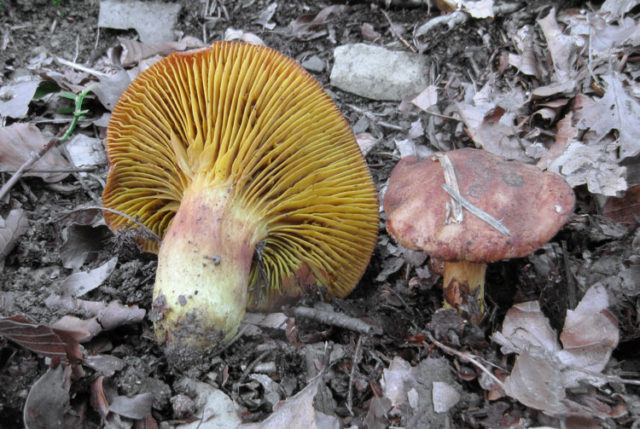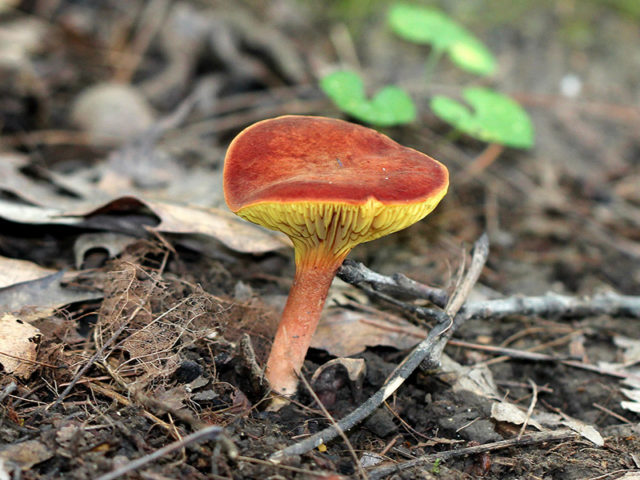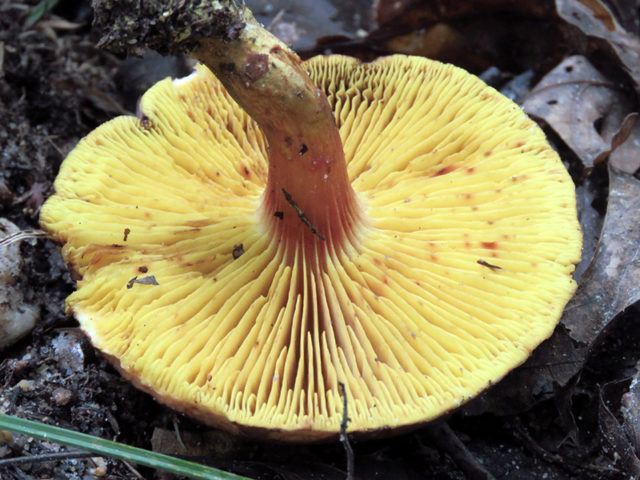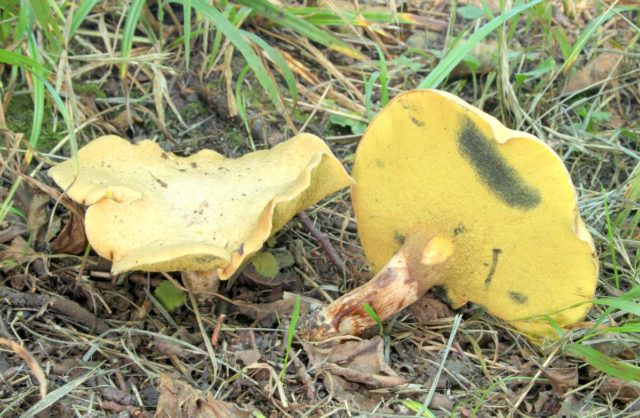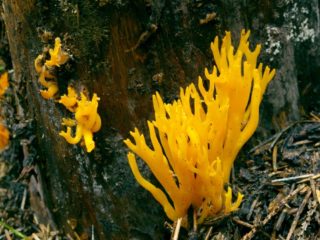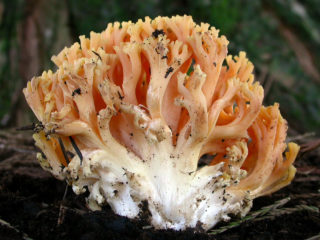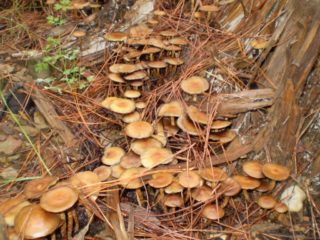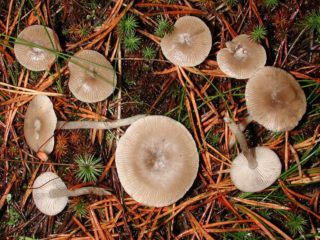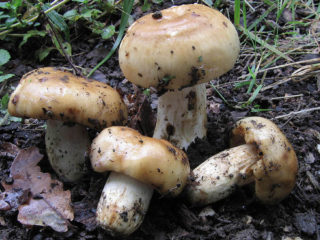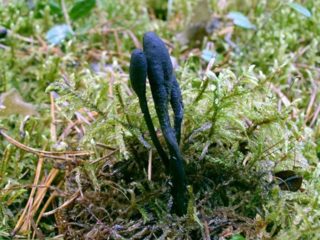Content
Phylloporus red-orange (or, as it is popularly called, phyllopore red-yellow) is a small mushroom of an unremarkable appearance, which in some reference books belongs to the Boletaceae family, and in others to the Paxillaceae family. It can be found in all types of forests, but most often groups of mushrooms grow under oak trees. The distribution area includes North America, Europe and Asia (Japan).
Phylloporus is not considered a valuable mushroom, however, it is completely edible after heat treatment. It is not consumed raw.
What does phylloporus red-orange look like?
The mushroom does not have bright external features, so it can be easily confused with many other species, which also have a red-orange color. He has no strongly poisonous counterparts, however, you should still remember the key characteristics of the phyllopore.
Description of the hat
The hat of a mature phylloporus has a reddish-orange color, as the name suggests. The edges of the cap are slightly wavy, sometimes cracking. On the outside, it is slightly darker than in the center. Its diameter varies from 2 to 7 cm. Young mushrooms have a convex head, however, as it grows, it becomes flat and even slightly depressed inward. The surface is dryish, velvety to the touch.
The hymenophore in young specimens is bright yellow, but then it darkens to a red-orange color. The plates are clearly visible, they have obvious bridges.
Leg description
The stem of the red-orange phyllopore can reach 4 cm in height and 0.8 cm in width. It has a cylinder shape, smooth to the touch. The top is painted in brownish tones, close to red-orange - the one in which the hat itself is painted. At the very base, the leg has a lighter color, turning into ocher and even white.
The inner part of the leg has no voids, it is solid. There is no peculiar ring (the so-called "skirt") on it. If the fruit body is damaged, there is no milky juice on the cut. There is a slight thickening at the base.
Is the mushroom edible or not
Phylloporus red-yellow is a conditionally edible mushroom. This means that it can only be eaten after additional processing, namely:
- frying;
- baking;
- boiling;
- soaking in cold water;
- drying in the oven or naturally.
The most reliable way of processing raw materials for cooking is considered to be intense thermal exposure - after it there is no risk of poisoning. Drying is less reliable, but also suitable.In its raw form, phylloporus is strictly forbidden to be added to dishes (both young fruit bodies and old ones).
The taste characteristics of this species leave much to be desired. The taste of phyllopore red-orange is inexpressive, without any bright notes.
Where and how it grows
Phylloporus red-yellow can be found in coniferous, deciduous and mixed forests, and it grows both singly and in groups. The distribution area is quite extensive - it grows in large quantities in North America, the islands of Japan and in most European countries. Most often, red-orange phyllopore is found in oak groves, as well as under spruces and beeches.
Doubles and their differences
The phylloorus has a weakly poisonous twin - a pig or a thin pig (Paxillus involutus), which is also called a cowshed, a filly, a pig, etc. You cannot eat it, therefore it is important not to confuse this mushroom with a red-orange phylloorus. Fortunately, they are easy to tell apart. The thin pig's plates have the correct shape, and if damaged, the fruit body of the twin becomes covered with brown spots. In addition, the color of the pig's cap is somewhat lighter than that of the red-orange phyllopore, as can be seen in the photo below.
Young phylloporus red-yellow novice mushroom pickers can be confused with alder wood. Ripe phyllopore can be distinguished from alder wood by its red-orange cap and distinct blades. The specimens that are at the initial stage of development differ from their counterparts in a much smaller waviness of the cap - in the alder forest, the bends along the edges are more noticeable and larger, and in general, the shape of the fungus is rather uneven. In addition, in this variety, in wet weather, the surface of the fruiting body becomes sticky. In the phylloorus, this phenomenon is not observed.
This twin is classified as an edible mushroom, however, its taste characteristics are very mediocre.
Conclusion
Phylloporus red-orange is a conditionally edible mushroom that cannot boast of good taste. It has no dangerous twins, however, an inexperienced mushroom picker can confuse the phylloporus with a weakly poisonous slender pig, so it is important to know the main differences between these species. The red-orange cap of the phylloorus is darker than that of the pig, however, young mushrooms are almost identical. In this case, the species are distinguished, slightly damaging one specimen - the filly should darken noticeably under mechanical pressure and acquire a brown tint at the site of damage.
You can learn more about what a red-orange phyllopore looks like in the video below:
